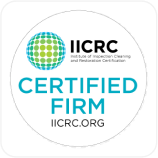Storm damage can be overwhelming. High winds, heavy rain, and hail can leave your home in disrepair, and the immediate aftermath often feels chaotic. But the good news is that you don’t have to handle it all alone. By taking the right steps and working with storm damage restoration contractors, you can restore your home quickly and effectively. Here are some practical tips to help you bounce back after storm damage.
1. Ensure Safety First
Before anything else, safety comes first. After a storm, it’s important to make sure your home is safe to re-enter. Check for hazards such as downed power lines, broken glass, or unstable structures. If you suspect there’s structural damage to your home, avoid entering until a professional can assess it.
Contacting a storm damage restoration company near me to perform an initial inspection is a good idea, especially if you notice signs of severe damage. Their expertise will help ensure that your home is safe to inhabit while you begin repairs.
2. Document the Damage
Once you’ve made sure it’s safe, document the damage as thoroughly as possible. Take clear photos and videos of every affected area, from your roof and windows to the yard and foundation. These records will be invaluable when you file your insurance claim. Make sure you don’t start cleaning up or repairing anything before you have this documentation. Insurance companies will want proof of the storm’s impact, and having thorough records can help speed up the claims process.
3. Secure Temporary Repairs
To prevent further damage to your home, make temporary repairs where possible. For example, if your windows were broken or your roof was damaged, you can cover them with tarps or plywood to keep rain and debris from causing additional harm. While it’s important to secure your home, avoid making permanent repairs until after your insurance company has had a chance to inspect the damage. If you’re unsure about handling temporary repairs, local storm damage restoration contractors can help. They can provide emergency services to stabilize your home until full repairs can begin.
4. Contact Your Insurance Company
After documenting the damage, the next step is to contact your insurance company to start the claims process. Provide them with the photos, videos, and any other relevant information you’ve gathered. They’ll send out an adjuster to assess the damage and help determine what your policy will cover.
Having a trusted storm damage restoration company near me on your side during this process can also be beneficial. Some contractors will work directly with your insurance company, helping to ensure that you receive the maximum coverage for your repairs.
5. Choose Trusted Storm Damage Restoration Contractors
Not all contractors are created equal, especially when it comes to storm damage. You’ll want to find storm damage restoration contractors with experience in handling these types of repairs. They’ll understand the unique challenges posed by storm damage, from roof and siding repairs to water extraction and mold remediation.
When choosing a contractor, make sure they are licensed, insured, and have a good reputation in the community. Ask for referrals, check online reviews, and get quotes from multiple companies to ensure you’re getting the best service for your needs.
6. Address Water Damage Quickly
Storms often bring heavy rain, which can lead to flooding and water damage. Water damage, if not addressed promptly, can lead to mold growth and structural problems. If you have standing water in your home, it’s important to start the water removal process as soon as possible.
A professional storm damage restoration company near me will have the tools and expertise to dry out your home effectively. From water extraction to dehumidification, they can help prevent mold and other long-term damage. It’s crucial to act quickly to minimize the impact on your property.
7. Check for Roof and Siding Damage
Your roof and siding are the first lines of defense during a storm, so it’s no surprise that they often suffer the most damage. High winds, hail, and debris can cause significant harm to shingles, gutters, and siding. Even if the damage doesn’t seem severe at first glance, it’s important to have a professional inspect your roof and siding after a storm.
Small issues, like cracked shingles or loosened gutters, can lead to bigger problems down the road. By calling in storm damage restoration contractors early, you can fix these issues before they turn into costly repairs.
8. Don’t Neglect Your Home’s Exterior
Storm damage isn’t limited to the inside of your home. Trees, fences, and landscaping can also be affected. Downed trees or large branches can pose a risk to your home’s structure, and damage to your driveway or walkways can be hazardous.
If your home’s exterior has suffered damage, make sure to include it in your repair plan. Many storm damage restoration contractors can handle not just the interior repairs but also the work needed to restore your home’s exterior to its pre-storm condition.
9. Stay Organized Throughout the Process
Storm damage restoration can be a long and complex process, especially if your home has been severely affected. Staying organized can make the entire experience smoother. Keep a file with all of your insurance claim details, repair estimates, receipts, and contractor information in one place.
This way, you’ll have everything you need at your fingertips when coordinating with your insurance company and contractors. It can also help you track the progress of your repairs, ensuring that nothing falls through the cracks.

 Get To Know Us
Get To Know Us




 We Offer Financing
We Offer Financing
















